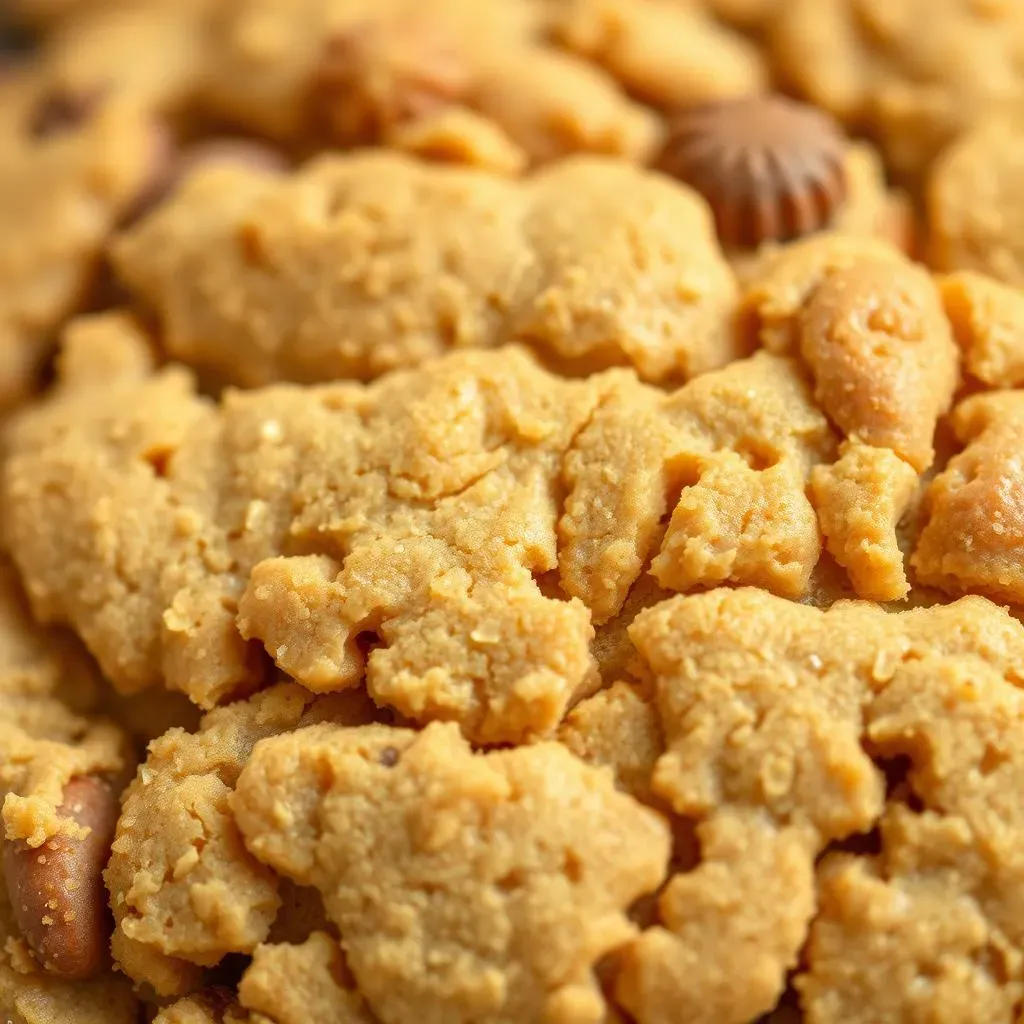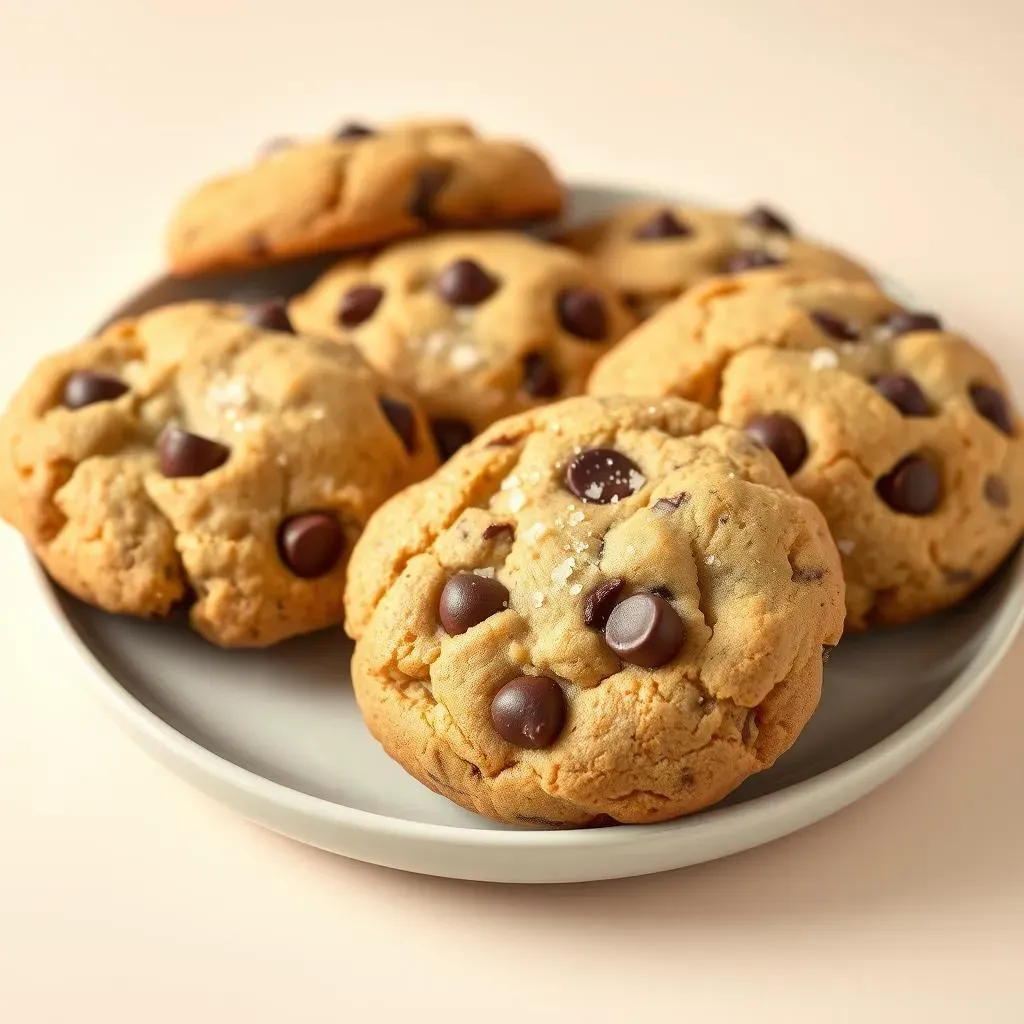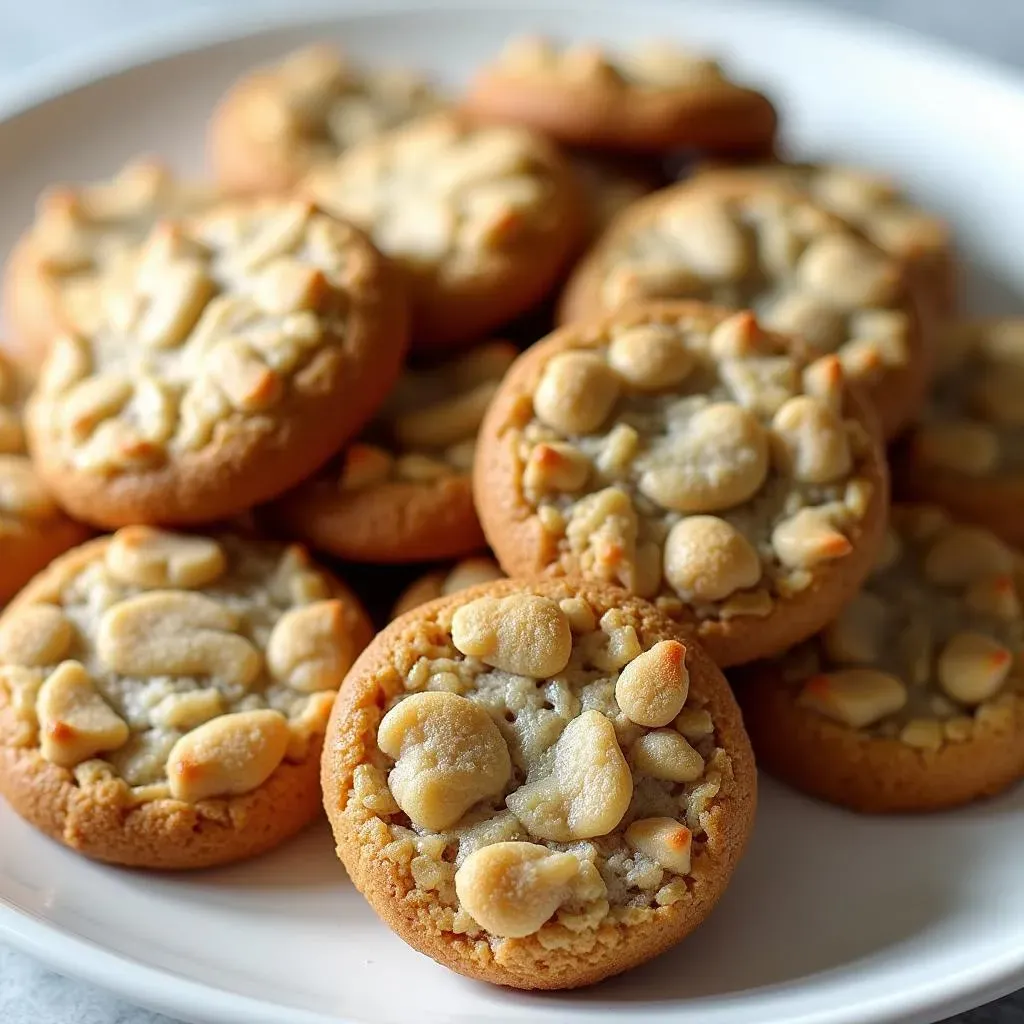Table of Contents
Who says you can't have your cookie and eat it too? I'm here to tell you that you absolutely can, even if you're keeping an eye on your fat intake. Forget those dry, tasteless diet cookies; we're diving into the world of delicious low-fat cookies that actually satisfy. This isn't about deprivation; it's about making smart swaps and using clever techniques to create treats that are both lighter and incredibly yummy. In this article, I'll guide you through everything you need to know about baking fantastic low-fat cookies, from the science behind it to the practical tips and tricks that will make your baking adventures a success. We'll explore the key ingredients, discuss common pitfalls, and share some killer recipes that will impress your friends and family. Get ready to discover that low-fat doesn’t mean low-flavor!
Understanding LowFat Cookies

Understanding LowFat Cookies
What Makes a Cookie "Low-Fat"?
Okay, let's get real for a second. When we talk about low-fat cookies, we're not talking about some magical, flavorless cardboard. We're talking about cookies that have been tweaked to reduce the amount of fat, usually by swapping out some of the butter or oil for other ingredients. It's all about making smarter choices. Think of it like this: instead of using a whole stick of butter, maybe we use half a stick and some applesauce to keep it moist. The goal is to keep the taste and texture that we all love, but with less of the fat that we might be trying to avoid. It's a balancing act, and when you get it right? It's pure cookie magic.
Now, you might be thinking, "Why bother?" Well, there are a bunch of reasons why someone might want a lower-fat cookie. Maybe you're watching your calorie intake, or perhaps you're just trying to make slightly healthier choices without sacrificing the joy of a good treat. Whatever your reason, it's good to know that you don't have to give up cookies altogether. You just need to understand the basic science of baking and how to make those clever substitutions. It's all about knowing your ingredients and how they behave. For example, you can use mashed banana, greek yogurt, or even pumpkin puree to replace some fats.
Ingredient | Typical Role in Cookies | Low-Fat Substitute |
|---|---|---|
Butter | Adds richness and flavor | Applesauce, Greek Yogurt, Pumpkin Puree |
Oil | Adds moisture | Mashed Banana, Prune Puree |
Whole Eggs | Adds richness, binding | Egg Whites, Flax Egg |
The Science Behind Fat in Cookies
Okay, I know science might sound boring, but trust me, it's kinda cool when it comes to cookies. Fat is a big deal in baking. It's what gives cookies that tender, crumbly texture and rich flavor. When you reduce the fat, you're messing with that structure. Fat prevents gluten from forming, which is what makes cookies chewy. Less fat, more gluten, could lead to tough cookies. That's why we need to be smart about our substitutions. We need to find ingredients that can mimic some of the fat's functions, like keeping things moist and tender. It's like a puzzle, and each ingredient plays a vital role.
It's also why you can't just swap out all the fat without thinking about it. It is not just about reducing the fat, but also about understanding how it impacts the other ingredients. If you are trying to lower the fat content using sugar substitutes, you might also have to adjust the amount of liquid ingredients used. The balance is key. If you change one thing, you might have to change another. Baking is a science, but it's also an art. It is about understanding the ingredients, and how they interact with each other.
Baking Delicious LowFat Cookies: Tips and Tricks

Baking Delicious LowFat Cookies: Tips and Tricks
Mastering the Art of Low-Fat Baking
Alright, so you're ready to jump into the world of low-fat cookies? Awesome! It's not as tricky as it might sound, I promise. The key is to think of it as a balancing act. When you cut back on fat, you've got to make sure you're replacing it with something that'll keep your cookies from turning into hockey pucks. Moisture is your best friend here, so don't be shy with things like applesauce, mashed banana, or even a little bit of Greek yogurt. These ingredients not only add moisture, but also bring a subtle sweetness that complements the other flavors. And don't forget about the impact of temperature! Make sure your wet ingredients are at the right temperature, usually room temperature, so they incorporate well and don't mess with the texture of your dough. It's all about being a bit of a scientist in the kitchen, but trust me, it's a fun experiment.
Another thing to keep in mind is your dry ingredients. When you reduce the fat, you might need to tweak the amount of flour to maintain the right consistency. Start with a little less flour than you think you need, and add more gradually if your dough seems too wet. Also, don’t be afraid to experiment with different types of flour. Whole wheat flour can add some extra fiber and a nutty flavor, while almond flour can add a slightly different texture. And, as you're mixing, avoid over-mixing the dough. Over-mixing can develop the gluten, which can lead to a tougher cookie. Mix just until the ingredients are combined, and then stop. It might take a few tries to get it just right, but that's all part of the fun!
Tip | Why it Works |
|---|---|
Use room temperature ingredients | Ensures proper mixing and consistency. |
Start with less flour | Prevents dry cookies and allows for adjustments. |
Don't overmix the dough | Keeps the cookies tender and light. |
Choosing the Right Ingredients
Let's talk about ingredients, because they're the stars of the show. When you're making low-fat cookies, every ingredient plays a role. For example, if you're swapping out butter, think about what you're using instead. Applesauce is great for moisture, but it doesn't add the same richness as butter. So, you might need to add a touch of vanilla extract or a pinch of salt to enhance the flavor. And when it comes to sweeteners, you can experiment with different types like honey or maple syrup, but remember they have different moisture levels, so you might need to adjust the liquids in your recipe. Sugar substitutes can reduce the calorie count, but they can also affect the texture. Some sugar substitutes can make the cookies softer, and some can have a slightly aftertaste. So, it is important to choose one that is right for you.
And, don't forget about your mix-ins! Chocolate chips are a classic, but you can also use nuts, dried fruit, or even a sprinkle of sea salt to elevate your cookies. When you are swapping out ingredients, remember that each change can impact your final result. It is important to understand how each ingredient functions and what to use as a replacement. For example, when you reduce the fat content, you might need to add more moisture to keep the cookies soft and chewy. So, take notes, experiment, and most importantly, have fun with it.
Enjoying LowFat Cookies: Recipes and Variations

Enjoying LowFat Cookies: Recipes and Variations
Classic Low-Fat Chocolate Chip Cookies
Okay, let's start with a classic – the chocolate chip cookie. But, a low-fat version, of course! The secret to these is using a combination of applesauce and a bit of coconut oil to replace most of the butter. It keeps them moist and chewy, and the coconut oil adds a subtle, delicious flavor. We're also cutting back on sugar a little, because who needs all that extra sweetness? I like to use sugar-free chocolate chips for this recipe, but you can totally use regular ones if you prefer. It's all about making it your own. These are the perfect cookies for when you want a treat but don't want to feel too guilty about it. Trust me, they’re just as satisfying as the full-fat version, maybe even more so, because you know you're making a slightly healthier choice.
To really make these cookies shine, I recommend chilling the dough for at least 30 minutes before baking. This helps the flavors meld together and prevents the cookies from spreading too thin. When you bake them, make sure not to overbake them. You want them to be slightly soft in the center so they stay chewy. And, if you're feeling fancy, you can sprinkle a bit of sea salt on top before baking. The combination of sweet and salty is just amazing. It is all about the balance, the small details that can elevate a simple cookie to a delicious treat. This recipe is a great base to start with, and you can add all sorts of variations later on.
Ingredient | Quantity |
|---|---|
Applesauce | 1/2 cup |
Coconut Oil | 1/4 cup, melted |
Sugar-free Chocolate Chips | 1 cup |
Creative Variations and Flavor Twists
Now that you've got the classic down, let's get creative! Low-fat doesn't mean boring, not by a long shot. How about adding some cinnamon and raisins for a low-fat oatmeal raisin cookie? Or maybe some chopped nuts and a hint of orange zest for a more sophisticated flavor? You can also use different types of flour, like whole wheat or almond flour, to add a new texture and flavor profile. I love to experiment with different extracts, like almond or peppermint, to create unique variations. It is all about having fun and seeing what you can create. The possibilities are endless when you start thinking outside the box.
And, if you're feeling adventurous, you can even try savory low-fat cookies. Add some herbs and spices, like rosemary or thyme, for a savory treat that pairs perfectly with cheese and wine. You might be surprised at how delicious a savory cookie can be. The key is to not be afraid to experiment and try new things. Baking should be fun, and it is a great opportunity to let your creativity shine. So, go ahead, grab your ingredients and create something amazing. Remember, it is not just about reducing the fat, but also about maximizing the flavor. Enjoy the baking journey!
